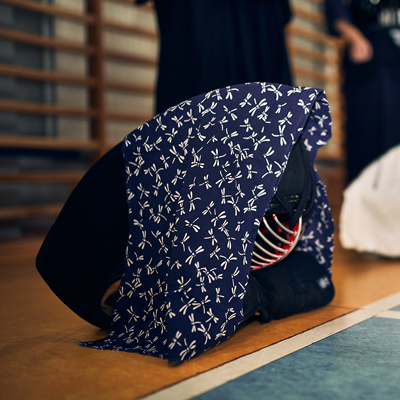Proper maintenance of Bogu is essential for both safety, hygiene and performance. If your armour is damaged or in poor condition, it can fail to provide adequate protection during Jigeiko, leading to potentially serious injuries.
It is therefore important to clean and inspect your Bogu regularly and, where deemed necessary, to replace any damaged or worn-out parts. Armour which is not properly cared for can become stiff or heavy, which can impede movement, affect the overall quality of practice and lead to premature failure of a Bogu part. By regularly cleaning and maintaining your Bogu, you can ensure that it remains lightweight and flexible, allowing you to perform at your very best.
Here are some simple tips to properly care for your Bogu:
Store your Bogu properly: Hang your Bogu on a purpose made rack or a sturdy hanger in a well-ventilated area to allow it to air out properly and prevent the growth of mold and mildew. Avoid storing your Bogu in direct sunlight or in humid environments.
Clean your Bogu when necessary: Wipe down your Bogu with a damp cloth or sponge to remove dirt and sweat. Some people use a mix of water and 70% Ethanol, but as Aizome already has anti-bacterial properties just the damp cloth with water should be enough. Be sure to dry your Bogu thoroughly after cleaning, as it could have the opposite effect and cause it to become mouldy otherwise. It is generally not recommended to wash your Bogu unless that component is advertised as being washable, as the water and detergent can damage the natural leather and other materials used in the construction. You could potentially use a tub of water to wash the Kote and Men, but ensuring that the you use lukewarm water and don’t let any of the leather parts of your Men get wet. If any leather parts do become wet, ensure it dries naturally without any heat sources to prevent the onset of material deterioration.
Inspect your Bogu regularly: Check your Bogu for any damage, such as tears or holes. Check the Himo, you can usually tell right away when it’s ready to snap and needs to be replaced. Pay particular attention to the Men, as it is the most important piece of armour for proper head protection. If you find Shinai splinters on your Bogu, remove them carefully and send our Shinai Maintenance Guide Link to your Dojo friends :)
Repair any damage: If any part of your Bogu is damaged, have it repaired as soon as possible to ensure that it continues to provide adequate protection. If the damage is severe, consider replacing the part entirely. It’s not always easy to find a Bogu repairer near you. We can recommend someone if you need, but you will probably need to ship the Bogu part to them, which increases the costs of the repair. What you can also do is pay a visit to a local shoe repairer. Although they are not specialised in Kendo equipment, they usually have the tools to fix small areas of damage like Kote holes. We have seen entire Kote palms being replaced by a shoe repair service and, while you could see the stitching was absolutely flawless, the Kote was perfectly functional and ready for a few more years of practice.
Replace when it is time: There’s no way around it, certain parts of your Bogu will become worn out or deteriorate beyond repair with time and use. It is important to replace these parts to ensure that your Bogu continues to provide adequate protection. Some Bogu parts, such as Kote palms, will wear much more quickly than others due to the way they get damp from sweat in combination with the friction of contact with the Shinai Tsukagawa. If you train more than a couple of times a week, consider getting a second pair of Kote to allow rotation and natural drying of leather palms between sessions to increase the lifespan of both pairs of Kote.
By inspecting, cleaning, repairing, and replacing your bogu as needed, you can ensure that it continues to protect you properly during practice and allow you to perform at your best.

